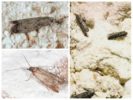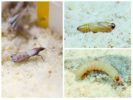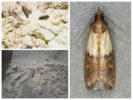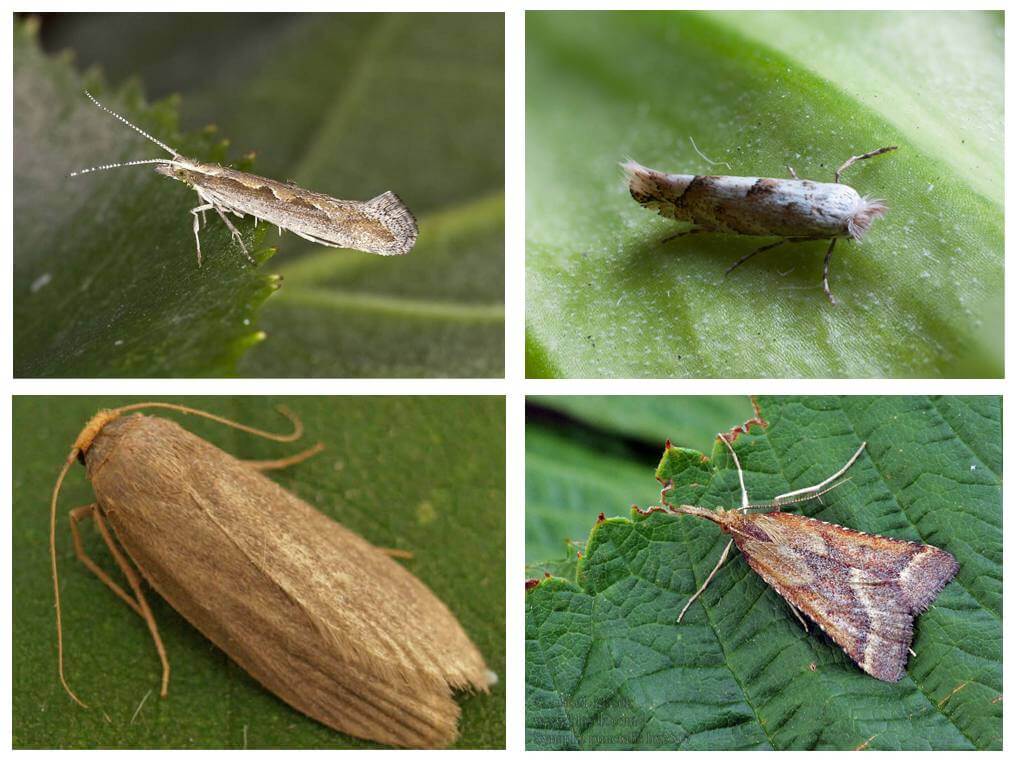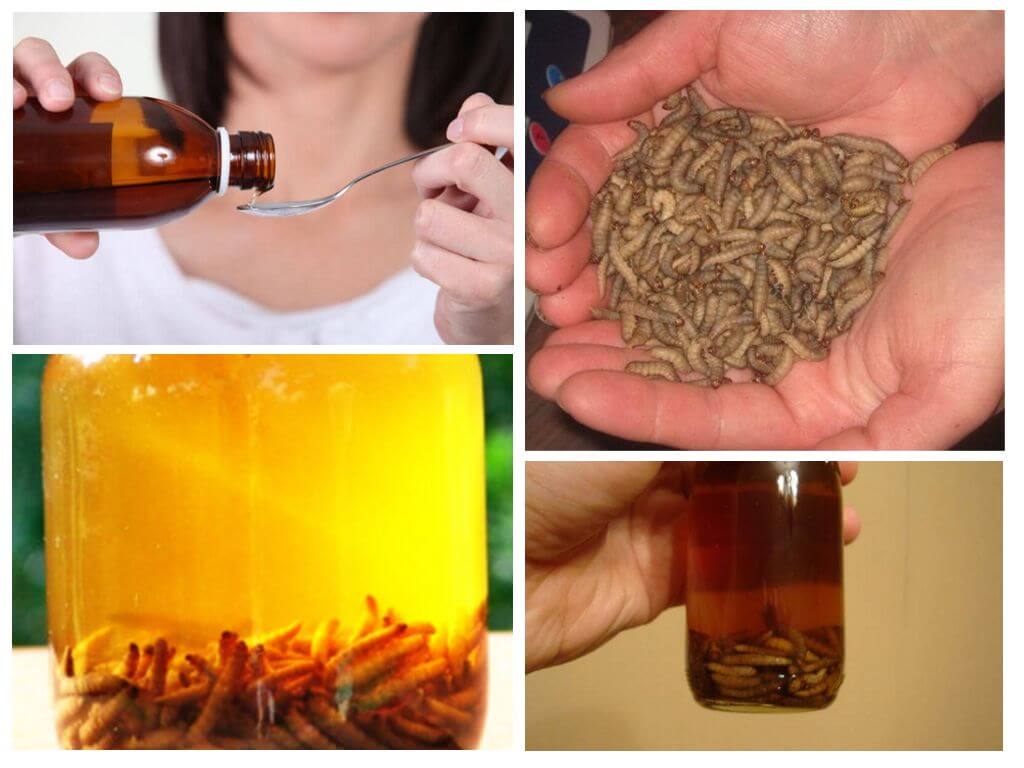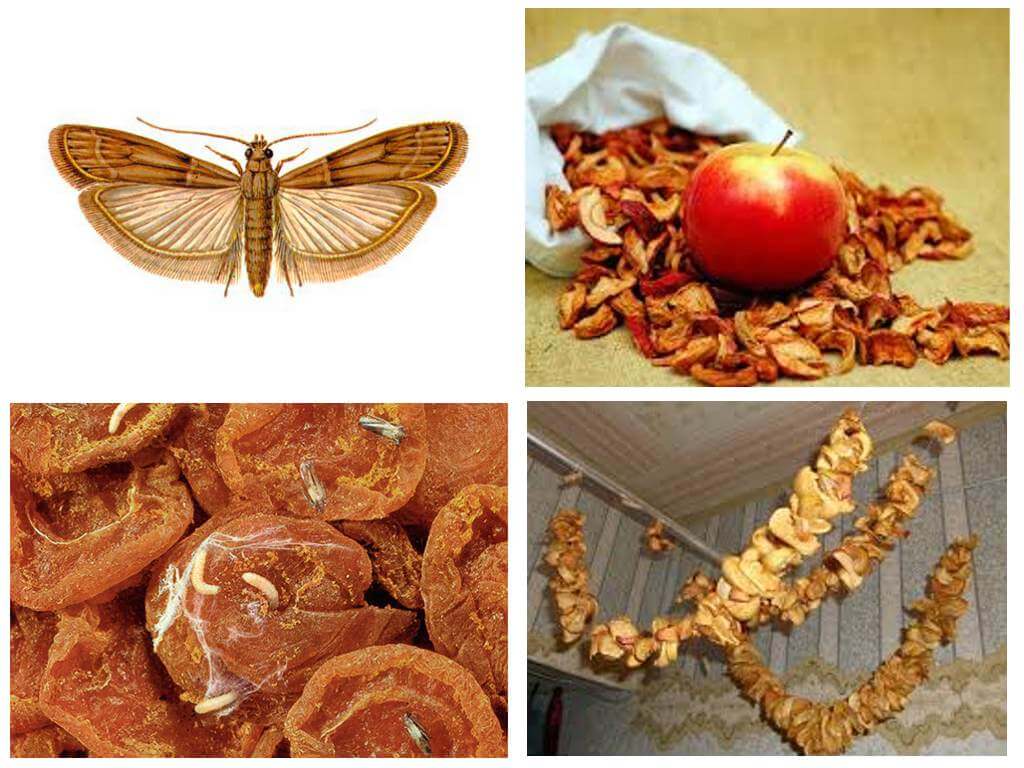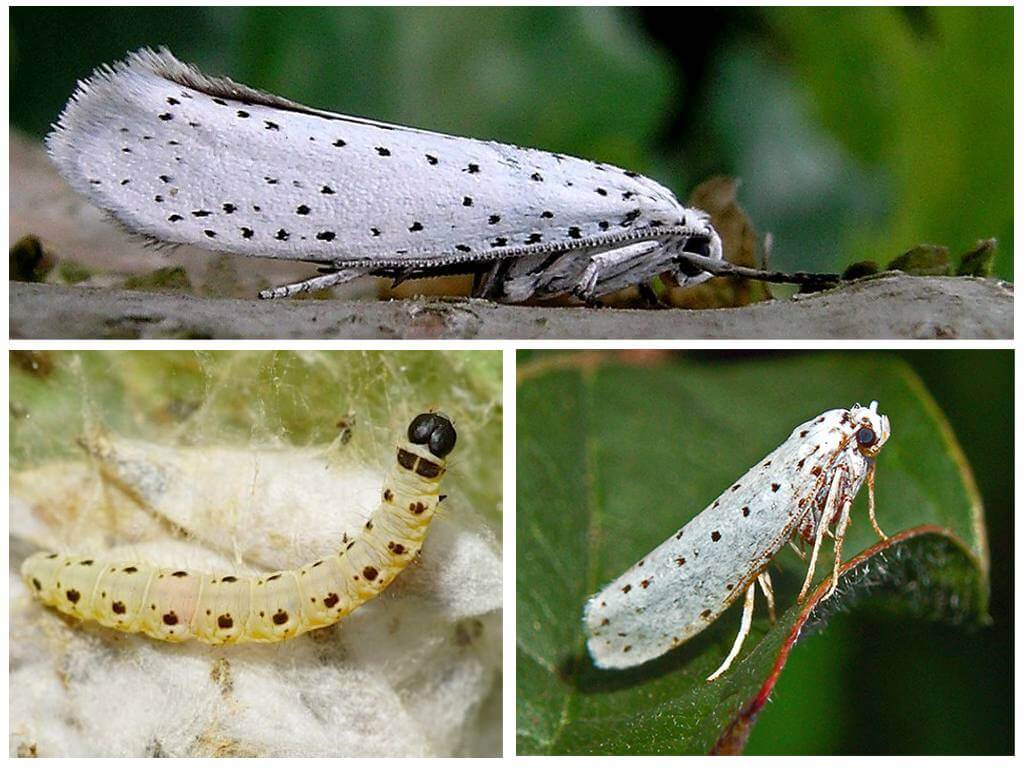- Flour moth
- Flour moth
- Flour moth
- Folk remedies for flour moth
What does the pest look like and signs of its presence
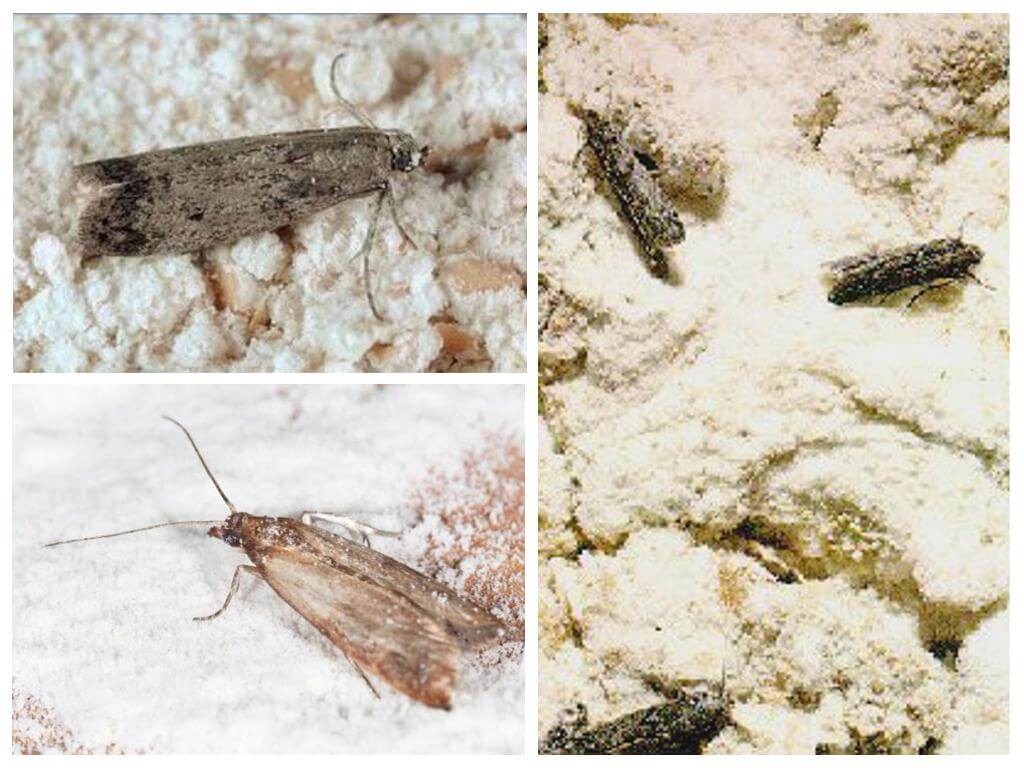
One of the largest types of moth is flour moth. The wingspan can reach up to 2-2.5 cm. The activity of the silver-gray color of the insect is manifested at night. Adult animals do not spoil the products, but only crawl over them to lay eggs. Where do they come from after a while moth larvaeup to 13 mm long. It is they who pose a real threat to food stocks: flour, flour products, cereals and even vegetables. Cocoons are built from the nutrient material of the caterpillar, in which they spend up to 5-6 weeks. The life span of a winged moth is about a month.
On a note!
Do not eat foods infected with flour moth, as feces, chitinous scales and the remains of dead insects remain in them. All this can not only lead to problems with the immune system, but also cause a strong allergic reaction and intoxication of the body.
You can understand that flour moth lives in the house by the following signs:
- The presence of butterflies sitting on the ceiling and walls;
- Larvae, as well as waste products of insects, can be found directly in the flour itself;
- Caterpillars crawling in the kitchen cabinet are another indication of the presence of flour moths in the kitchen.
Penetration paths
Even the cleanest housewife is not able to insure herself against the appearance of flour moths in the house.
- Moth can get into the house flour purchased in the market or in the store that was produced in violation of the standards or stored in the wrong conditions.
- Winged moths can enter the apartment through a window without a mosquito net or a ventilation hole.
On a note!
It is possible to minimize the likelihood of spreading flour moths if the products brought are warmed up in the oven or the insect eggs are destroyed by freezing.
How to get rid of a pest
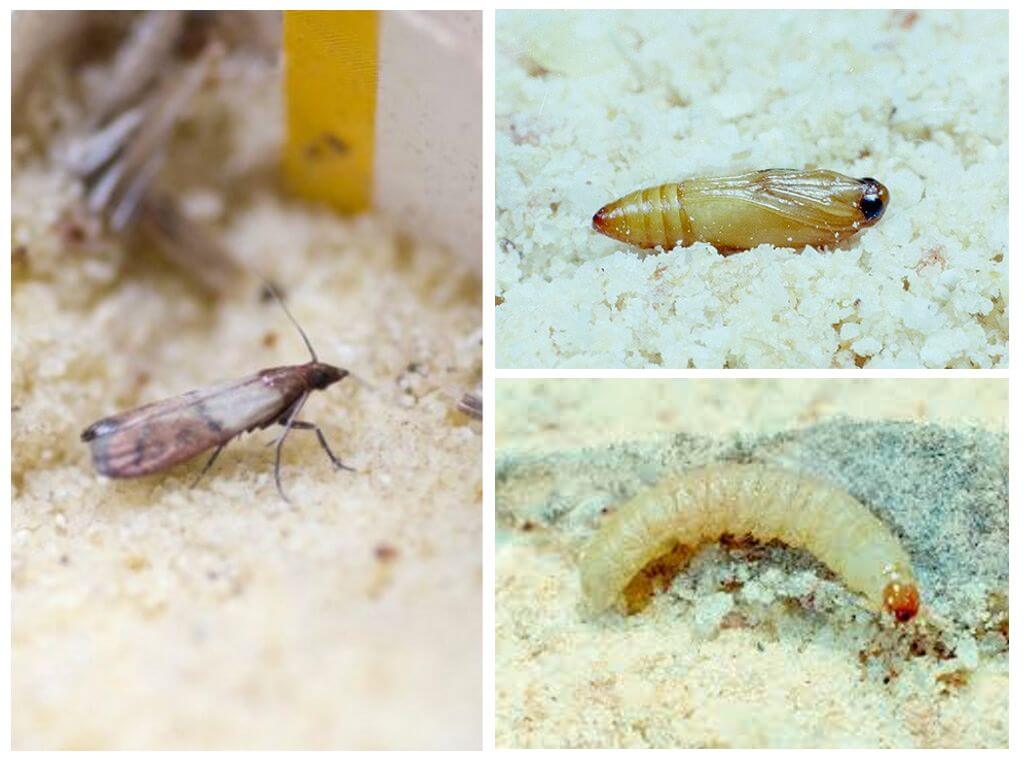
Before you start a fight with flour moth, you must:
- Carry out an audit in the kitchen. It is important to determine the source of the pest: flour or any other product that the moth has come into contact with should be ruthlessly thrown away;
- Products that do not have obvious signs of the presence of the pest should be sorted out, heated in an oven (at a temperature of no more than 60 degrees) or in a microwave oven;
- Products in the surviving packaging can be disinfected by putting it in the freezer for 2-3 days;
- Good lighting and general cleaning will help to frighten away the uninvited “lodger”. The inner walls of kitchen cabinets must be washed with soap and soda solution and treated with vinegar;
- It is better to store flour, cereals and other bulk products in dry clean containers with hermetically sealed lids;
- Use folk remedies to combat flour moth.
Folk remedies
The question of how to get rid of flour moths in the kitchen worries every housewife who discovered an insect in her home. For these purposes, folk remedies can be used.
Garlic
In order not to get a mole in the flour, it is necessary to put a couple of garlic cloves in a container with flour. Its specific smell is not to the taste of pests, so the female simply does not want to lay eggs in such a product.
Laundry soap
An excellent deterrent is laundry soap. It is used for processing the interior surfaces of kitchen furniture. It is enough to grate it on a coarse grater and mix with water in a ratio of 1: 1. The surface is treated with such a soap mixture, after which it is washed off and thoroughly wiped.
Vinegar
Vinegar will help get rid of moths unnoticed in crevices. It should be used after processing the cabinet with a solution of laundry soap. For convenience, you can use a brush. Lemon juice can also be used for this purpose.
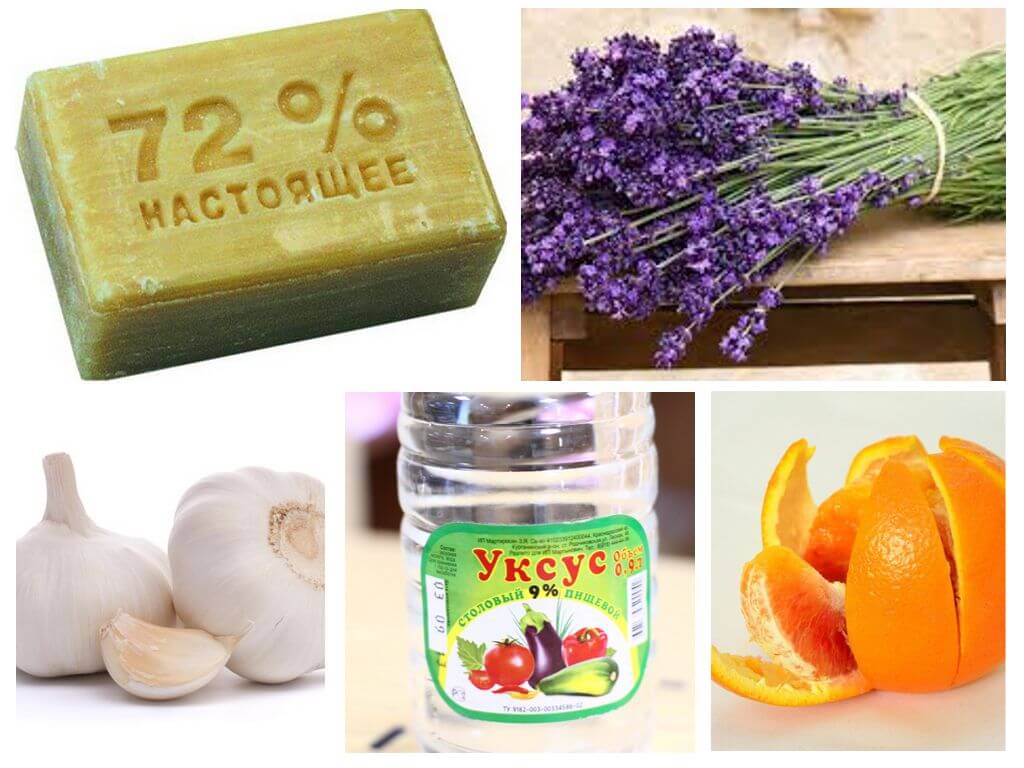
Lavender
You can protect products from the pest with lavender. The smell of this plant does not tolerate moth, therefore, will not settle where its branches lie. A wormwood, mint, tansy, bay leaf and chili pepper have a similar effect.
Oranges
No less effective remedy for flour moth is the peel of an orange, lemon or grapefruit. It is enough to spread it in the corners of the kitchen table or cabinet and the pest will not fly there. It is only necessary to replace the crusts with fresh ones as they dry.
Tobacco and camphor
Insects will not lay eggs if tobacco is put on a shelf with food. Camphor has a similar deterrent effect.
On a note!
All of the above methods have a strong smell, which only repels flour moth. However, he is not able to rid the product of larvae and eggs. Moreover, having placed on the shelf a package with infected flour, adult individuals will soon appear from the caterpillars located in it, who will get used to this aroma and will no longer be afraid of it.
It is not advisable to use insecticides to control flour moth, since the products processed by them are dangerous to eat.
Traps
You can catch winged moths flying around a cabinet or kitchen using an adhesive trap. Principle food moth traps based on the use of pheromones of females, which attracts males. And in the absence of males, the moth cannot reproduce.
Sections
Another productive way to kill moths is through sections. They come with and without smell. Most often, such a tool is used to eliminate clothes moths, but many housewives use it in the kitchen.
Preventative measures
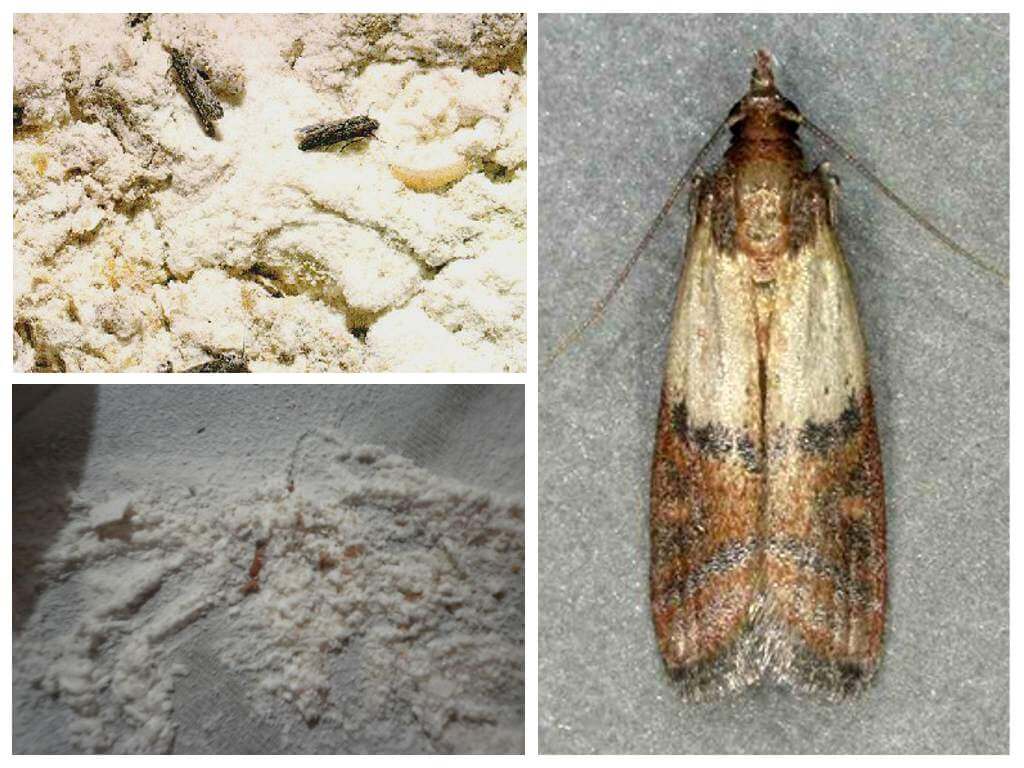
The following recommendations will help to prevent the appearance and spread of flour moth.
- Regular ventilation is the key to the absence of winged pests in the house.
- You should not buy flour and cereals in damaged packages, as well as storing groceries for future use.
- Products purchased at the store should be carefully examined for signs of infection. Apply the method of heating or freezing to destroy the larvae and eggs of the moth.
- Store flour, cereals and other grocery products in hermetically sealed containers.
- Cover the ventilation openings and windows with a mosquito net.
- Use garlic, odorous herbs and other folk remedies, laying them on the shelves of cabinets.
Observing storage rules and preventive measures, flour moth will not start in your kitchen.
Reviews
“A mole started in flour 2 months ago, I noticed this almost immediately, and therefore she did not manage to infect other products. Threw flour, lying next to buckwheat moth frost treatment, and the store where I purchased it is now bypassing. ”
Victoria, Samara
“Noticing butterflies in the kitchen, she killed them with Dichlorvos, but probably a moth laid eggs, from which new larvae appeared. I got rid of all bulk products (flour and cereals). While the moth does not bother. ”
Olga, Perm
“I was looking for moth in flour and cereals, but it turned out that she wound up in dried herbs. I revised it all over again, threw out most of the products, and distributed the remaining grains among the sealed cans. Took advantage folk remedies for moths: I washed the cabinets with laundry soap and put garlic in them for prevention. Since then, I haven’t seen a moth. ”
Albina, Khabarovsk
